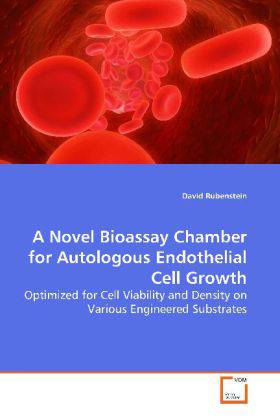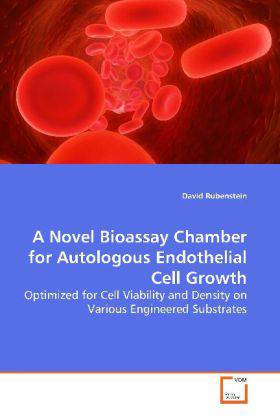
- Afhalen na 1 uur in een winkel met voorraad
- Gratis thuislevering in België vanaf € 30
- Ruim aanbod met 7 miljoen producten
- Afhalen na 1 uur in een winkel met voorraad
- Gratis thuislevering in België vanaf € 30
- Ruim aanbod met 7 miljoen producten
Zoeken
A Novel Bioassay Chamber for Autologous Endothelial Cell Growth
Optimized for Cell Viability and Density on Various Engineered Substrates
David Rubenstein
Paperback | Engels
€ 67,45
+ 134 punten
Omschrijving
Tissue engineering is an interdisciplinary field
which focuses on scaffold design to aid in tissue
replacement. One major difficulty involves the lack
of vasculature within these scaffolds. This leads
to replacement failure. We take the approach to
fabricate a scaffold that directs endothelial cell
(EC) migration to form planar capillary networks. In
vivo, a combination of topological, mechanical and
chemical cues dictates migration. Here, scaffold
composition, surface chemistry and shear stress were
used to direct migration. Experiments were designed
to optimize electrospun scaffolds for ECs. Results
indicated that ECs prefer to grow along fibers with
a 1-5 micron diameter. A novel bioassay chamber was
designed to optimize EC growth from an autologous
donor source. Murine aortas were dissected,
cannulated and perfused at low flow rates. Cell
density was unrelated to flow rate, but viability
was enhanced with higher flow. Long term culture
increased cell viability without affecting density.
This work should help elucidate a new method to
engineer blood vessels and should be useful for
anyone interested in optimizing biomaterial
scaffolds for use with ECs.
which focuses on scaffold design to aid in tissue
replacement. One major difficulty involves the lack
of vasculature within these scaffolds. This leads
to replacement failure. We take the approach to
fabricate a scaffold that directs endothelial cell
(EC) migration to form planar capillary networks. In
vivo, a combination of topological, mechanical and
chemical cues dictates migration. Here, scaffold
composition, surface chemistry and shear stress were
used to direct migration. Experiments were designed
to optimize electrospun scaffolds for ECs. Results
indicated that ECs prefer to grow along fibers with
a 1-5 micron diameter. A novel bioassay chamber was
designed to optimize EC growth from an autologous
donor source. Murine aortas were dissected,
cannulated and perfused at low flow rates. Cell
density was unrelated to flow rate, but viability
was enhanced with higher flow. Long term culture
increased cell viability without affecting density.
This work should help elucidate a new method to
engineer blood vessels and should be useful for
anyone interested in optimizing biomaterial
scaffolds for use with ECs.
Specificaties
Betrokkenen
- Auteur(s):
- Uitgeverij:
Inhoud
- Aantal bladzijden:
- 176
- Taal:
- Engels
Eigenschappen
- Productcode (EAN):
- 9783639152364
- Uitvoering:
- Paperback
- Afmetingen:
- 220

Alleen bij Standaard Boekhandel
+ 134 punten op je klantenkaart van Standaard Boekhandel
Beoordelingen
We publiceren alleen reviews die voldoen aan de voorwaarden voor reviews. Bekijk onze voorwaarden voor reviews.











